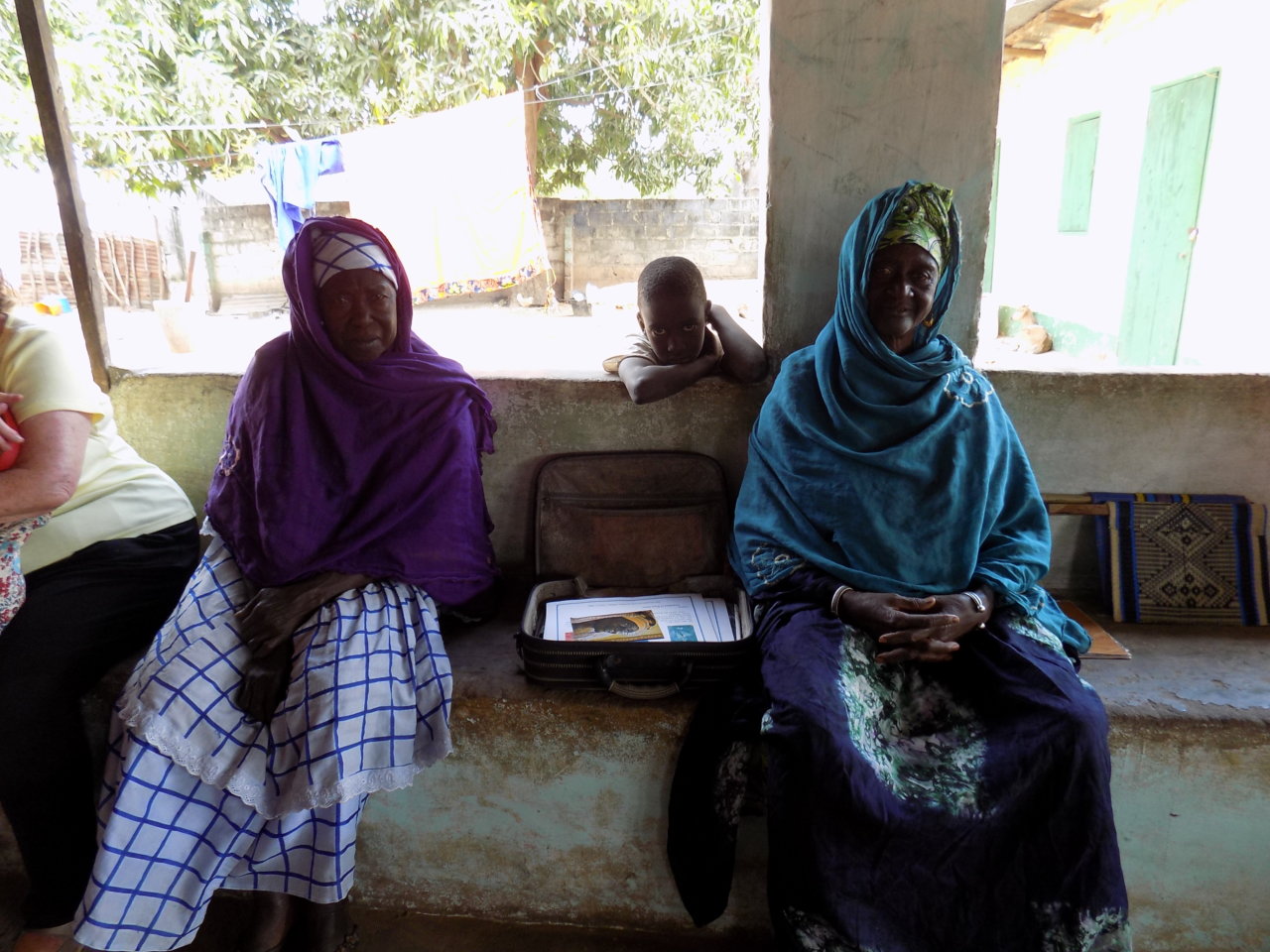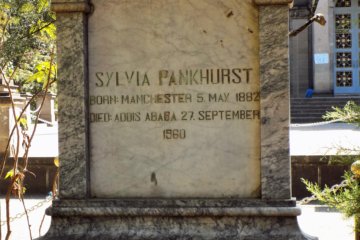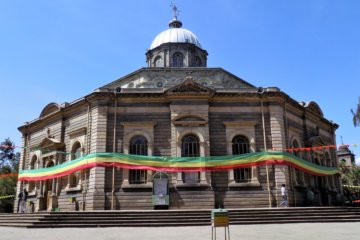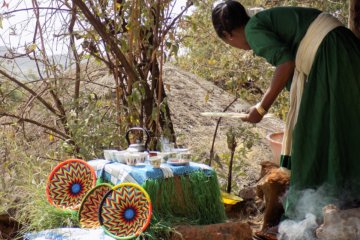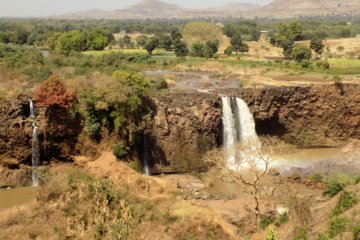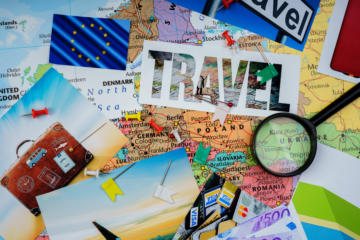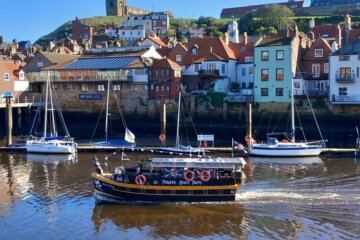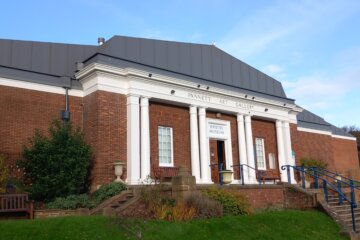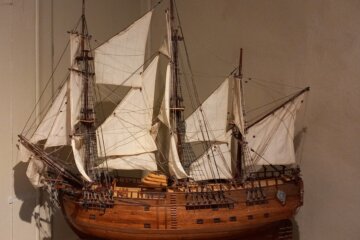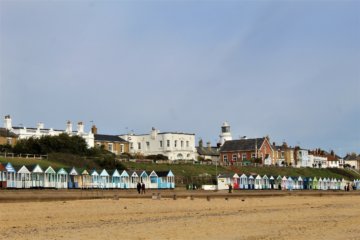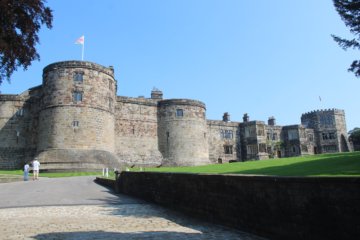The day trip billed as ‘The Roots Cruise’, which takes holidaymakers from their resorts, to Banjul, and then up the Gambia River to Albreda, Jufureh and James Island, is probably the most popular excursion in The Gambia. All the tour operators run the same trip and everyone who books ends up on the same boat, regardless of who they booked with. We didn’t do the trip when we were here last year as we ran out of time, but, this year, we decided we had better do it. We booked with Arch Tours, the operator who proved to be so good when we used them previously.
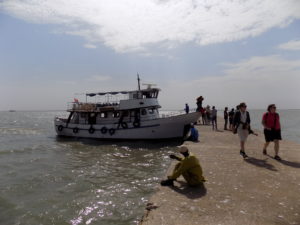
The boat trip up the river to the twin villages of Albreda and Juffureh takes between two and a half and three hours, depending on the tide. The river is very wide all along the journey, so there is little to see. Tourists are kept occupied by being fed breakfast on the way there and lunch on the way back. The boat used is Spanish owned but crewed by Gambians, resulting in a rather bizarre breakfast of tuna baguettes and sangria being served at 10am! The buffet lunch, consisting mainly of different types of salad, was tasty and plentiful and was followed up with offerings of fresh watermelon and tea or coffee. All very pleasant, but it hardly made up for the fact that you’re spending five or six hours on a boat with not much to see.
The other let down to the day was the emphasis placed on the link with Alex Haley and his book ‘Roots’. This Pulitzer prize winning book, in which Haley traced his ancestry back to a slave called Kunta Kinte who was born in the village of Juffureh, was presented to the world as a factual account and led to many black Americans making trips to The Gambia, Senegal and Guinea in search of their African heritage. In reality, it became known in 1993, after Haley’s death, that the work was fictional and that Kunta Kinte could not possibly have been Haley’s ancestor. Despite this, tourists today are still being told that the story is true and members of ‘Haley’s family’ (who could also be my family, seeing as Haley is my maiden name – but that’s another story!!) are wheeled out to be photographed. Visitors are encouraged to buy a booklet which proves the family line and includes images of Haley visiting Juffureh in 1978.
For me, the stress placed on this fiction detracts from the real story which legitimately needs to be told – that is, that this part of The Gambia was one of the centres of the transatlantic slave trade, a ruthlessly organised venture that resulted in at least 10 million African captives being shipped to the Americas over three centuries, a five-week voyage in conditions so cramped and unhygienic that half the human cargo died in transit. This unprecedented story of man’s inhumanity to man is lost in the enthusiasm to capitalise on the ‘Roots’ link.
What tourists are not told is that this appalling trade was devastating to the West African interior, which became flooded with European firearms, the currency used to buy slaves. Whole swathes of The Gambia and Senegal deteriorated into a hunting ground where village after village was subjected to armed slave raids led by more powerful neighbouring tribes. For every able-bodied African captured, several more – children, the elderly, the sick – were killed on the spot.
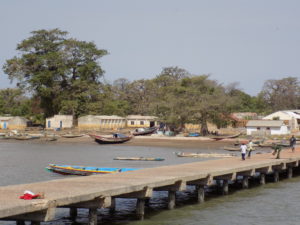
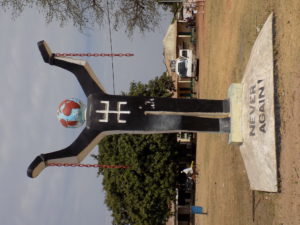
The significance of the places visitors are taken to on the day trip is not explained. Groups are taken first to Albreda, where they are shown the anti-slavery statue with its ‘Never Again!’ inscription, but they aren’t told that this was a French strategic outpost from 1681 to 1857 and, until abolition in 1807, hundreds of thousands of slaves were kept here before being shipped. The village museum does little to describe the horror, concentrating as it does on the Alex Haley link.
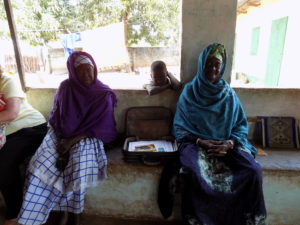
From Albreda, it’s a short walk to the neighbouring village of Juffureh, where tourists are introduced to Kunta Kinte’s descendents, but they are not told that this was, from 1680, the English equivalent of Albreda and used for the same purpose.
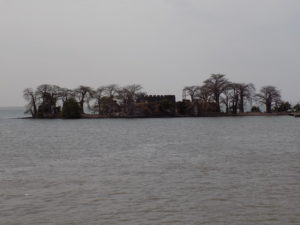
The final stop of the day, reached by small boat, is Fort James Island, a small rocky outcrop in the middle of the Gambia River. It was first settled by Latvians in 1651 who used it as a trade outpost. It changed hands many times and was held, at intervals, by the French, the British and the Dutch. Little survives of the once impressive fort, but remnants of the dungeon, in which slaves used to be incarcerated, give the site a certain poignancy. Following abolition, British naval ships based at James Island intercepted and destroyed more than 100 French and Portuguese slave vessels off the Gambian coast.
Perhaps it would be better if this excursion were renamed so that the rea story of The Gambia’s past could be told?
Join our mailing list

Sign up to receive our monthly newsletter. Keep up with what we're doing and be the first to receive special offers and insider tips.

